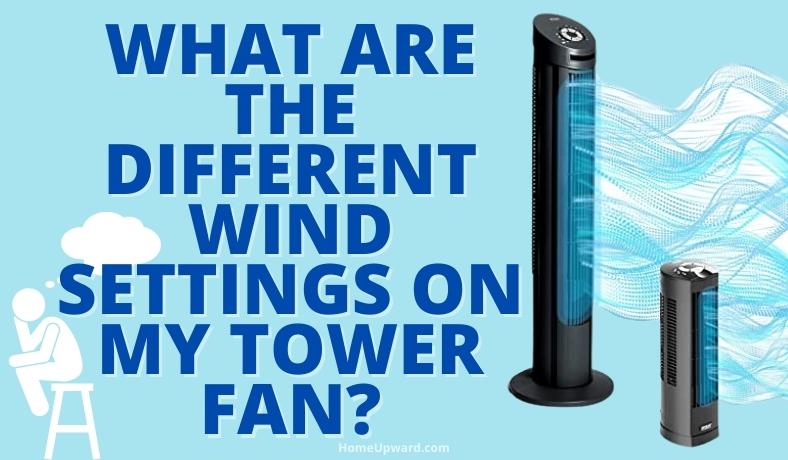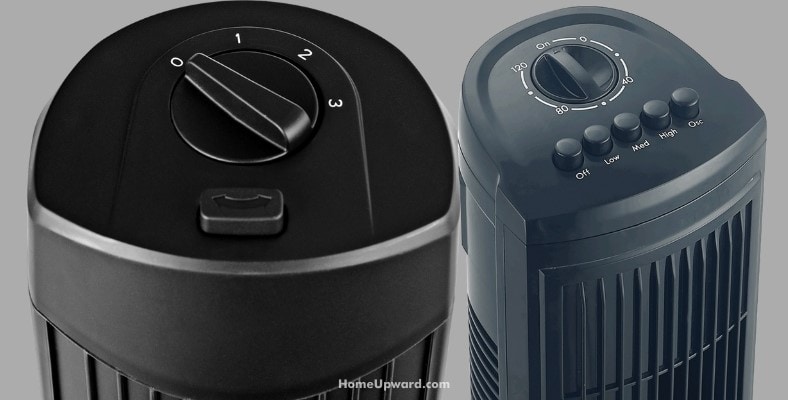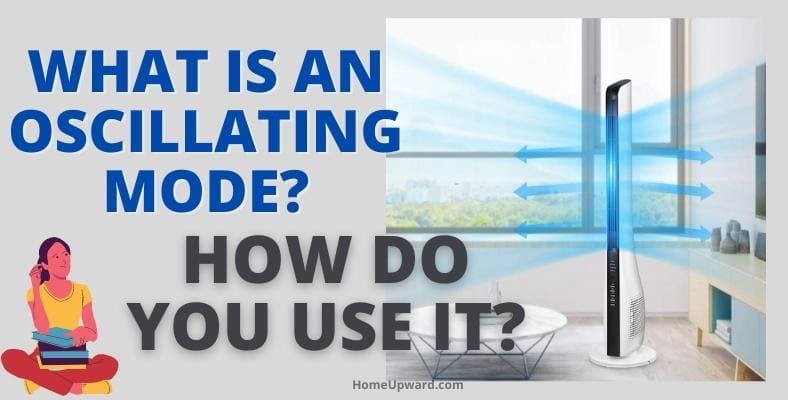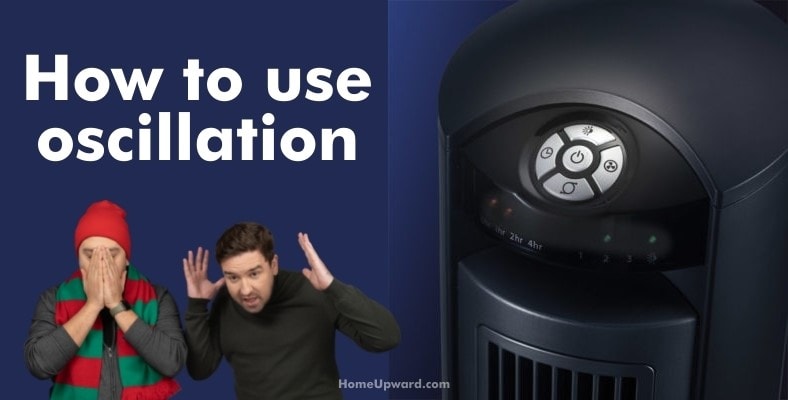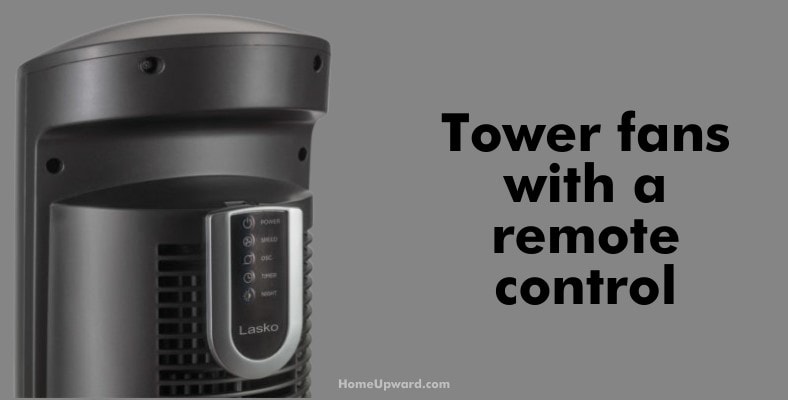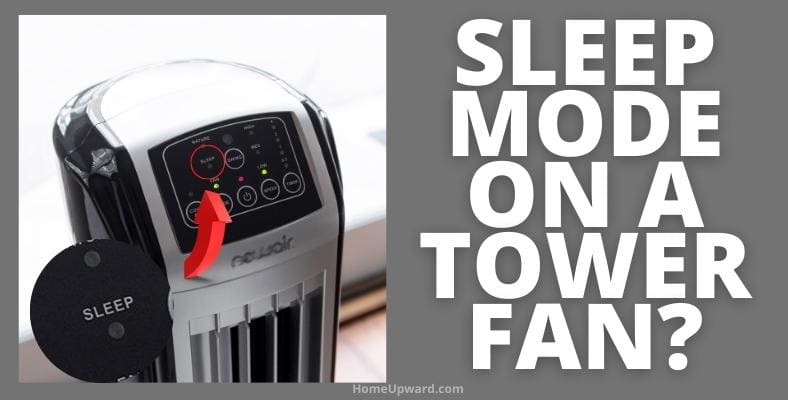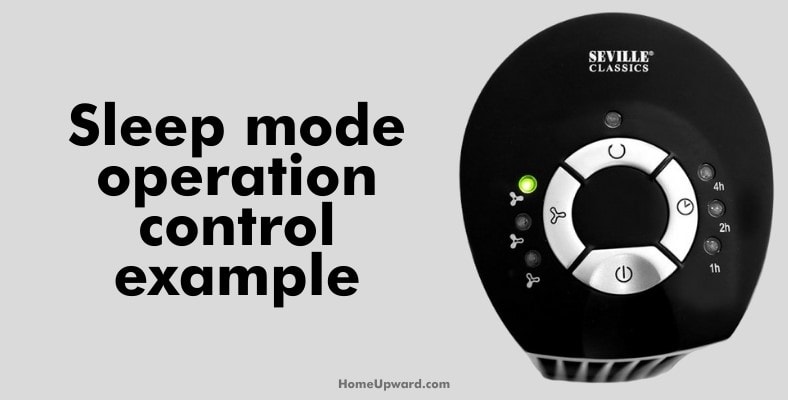Tower fans come with many impressive high-tech features. If you’ve ever wondered what the different wind settings on my tower fan are, you’re in the right place.
Contents
Tower fans: Wind & operational settings explained
Depending on your passion for LED screens and technology, your tower fan can come come with a lot of settings to precisely adjust your wind and airflow.
If high-tech isn’t your thing, don’t worry – many tower fans have traditional button controls and everything in between.
Typical tower fan control panel details
Your tower fan will always have a few basic options: High, low, and on/off.
Entry-level oscillating fans will usually have the wind settings and oscillation on/off settings. Basic tower fans allow you to pick one of these airflow options, and whether you want movement or not.
The next level of tower fan often gives you a medium option for your airflow, and some will even allow you to adjust for the amount of oscillation.
Mid-level tower fans come with airflow controls that you can adjust, as well as a remote. In this example (moving left to right, top row to bottom row,) you can turn on and off oscillation mode, power the fan, set an auto-sleep timer, pick a style of airflow, power a light, and adjust the level of airflow. Different modes could include sleep mode, natural wind, or regular operation.
The high-end tower fans will have LED or LCD digital displays.
Digital vs. standard control examples
Standard controls are a bit more intuitive because each mode has a button with an image of what the button does.
High-end tower fans have LED displays and a lot more options that you can adjust to suit your needs. A multi-featured fan like the one above, for example, provides 9 modes of operation. The LED display allows you to pick your gear speed, airflow speed, oscillation degree and speed, adjustable timers, quiet mode, and more.
Other tower fans may have a display (like this popular Amazon fan) to show the fan’s ambient temperature, speed and mode, and airflow settings.
A display screen can help your tower fan if you want a visual reminder of the settings you are using at the moment and a visual reminder of the adjusted controls.
However, these use more energy and can be confusing to operate if you’re not familiar with tower fan operations.
What is an oscillating mode, and how do you use it?
Oscillation – or movement from side-to-side – is a feature most tower fans have. But what does it do, exactly, and is oscillation mode on a tower fan important?
What Oscillating Mode means
Tower fans work by pushing air out at a 90-degree horizontal angle. This changes how the air is removing heat in your room.
When you enable oscillation on your fan, you allow the fan to turn regularly from side-to-side, improving its ability to spread air around the room better.
How to use oscillation
To turn on oscillation mode, check your fan.
You will want to look for a button that shows arrows pointing to both sides. Some will have the button abbreviated (like osc), while others will simply have the two indicators. This Lasko fan features a button at the bottom of a five-button control panel that makes a circle.
Tower fans with a remote control
A remote control is a very convenient feature. It allows you to change the settings on your tower fan from across the room without manually touching the buttons at the top of the fan every time.
Many fans will have remotes with labels that clearly inform you of their purpose. Using your remote, adjust the airflow, set an auto-sleep timer, turn on night or sleep mode, or adjust the speed your fan is moving from side to side.
What is sleep mode on a tower fan?
Whether you need a fan to cool you down so you can get to the best body temperature for sleeping, or you want the white noise a fan offers, sleep mode can be wonderful at nighttime.
On most tower fans, sleep mode works by slowly decreasing the airflow speed before turning off. This creates a gentle ride into dreamland for you, while saving energy by not leaving a fan running all night.
The timer can be automatically adjusted so that the fan can power off in a set number of hours. If you like falling asleep to a cool breeze, but don’t want to leave a fan running all night, sleep mode is a very good option for you.
Sleep mode operation control example
There are two types of sleep mode: an auto-off timer and nighttime or bedtime setting.
As an example, on this Seville personal tower fan auto-off timers control how long the fan will stay on until it turns itself off.
Other tower fans have nighttime settings. These controls allow you to set the fan on “nighttime” mode and go to sleep, and the fan will automatically and slowly dim the control lights and decrease the fan speed before finally turning itself off.
What to know when setting up sleep mode for your tower fan
The first thing you should think about is the location: where will you put your fan?
If you want the fan to hit you directly all night, then turning off oscillation will give you direct airflow. However, if you want the benefits of oscillation and flow of air around (but not straight ON) you, then you might want to place your tower fan in a spot that will either cool air above you or not hit you directly.
The amount of current you want in your room will help you pick the right airflow for your tower fan. A standard model will put out about 500 CFM, or cubic feet per minute, on medium. If you like more airflow (a ceiling fan on high will put out around 4,000 CFM, for example) then you should look for fans that are more powerful.
Keep in mind the decibel rating your tower fan will produce while on high. Listed in dB, health experts suggest that the normal amount of noise in your bedroom should be 50dB or less. The best decibel level is 30 dB or less. The tower fan will come with a decibel range or highest decibel level. While the normal tower fan will clock in around 55 dB, many quiet fans or fans specially made for sleep will average 30 dB or less.
Finally, think about how important ionization and air cleaning are to you while you sleep. If you have bad allergies or live in an area with a lot of pollution, a tower fan that provides an extra layer of air cleansing may relieve constant allergy-like symptoms.
People with asthma or trouble breathing may find that ionization helps them breathe better, enabling them to sleep better.

